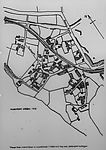 Mushroom Green 1919
Mushroom Green 1919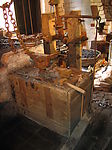 Chainshop at Mushroom Green
Chainshop at Mushroom Green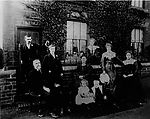 The Kendrick Chainmaking Family
The Kendrick Chainmaking Family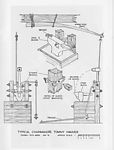 Chainmakers' Tools
Chainmakers' Tools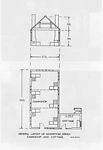 Chainshop & Cottage
Chainshop & Cottage

The nail makers of Mushroom Green, as with many of the nail makers in the rest of the Black Country, found that they could readily adapt their skills and tools to chainmaking, which was more skilled and slightly better paid than nail-making. The homeworkers of Mushroom Green were producing small chain, principally for agriculture, such as cattle ties, trace chains, back-bands etc., as well as chains for use in industry and the mines.
By 1871 there was a working population of one hundred and thirty-seven, of whom ninety-nine were chainmakers, including thirty-nine women. The rest were iron-workers, such as puddlers and rollers, and a mixture including a policeman, baptist minister, publican, grocer and dressmaker.
Although chainmaking was never carried out on a large scale at Mushroom Green, a number of small chain factories were built around the 1850’s. One of these was owned by the Kendrick family, who lived at number 14 (see picture). The chain-shop was built around the 1860s, and was purchased by Mr. Harry Kendrick in 1927. According to the title deeds, the price of one hundred and twenty pounds was paid for "a parcel of land containing 35 perches or thereabouts, together with the messuage or dwelling house, chainshops, outbuildings and premises erected thereon".
The Earl of Dudley retained the mineral rights to the land and, to cover himself in case of any subsidence, the following clause was put in the deeds, ensuring he retained the right,
"to get and carry away adjacent or other mines minerals, stones and clay without being liable to leave support to the land and premises hereby conveyed or any buildings that may be now or hereafter may be erected thereon".
Harry Kendrick continued to make chain there until his death in 1965 in his 80th year, leaving his wife Emily alone in number 14. Emily did not like electricity and would not have it fitted in the house, although it had been fitted in the workshop to power the "blast" for the fire. When Harry died, Emily had the electricity removed from the workshop and, because the building still attracted rates, she sold off the contents to a scrap merchant for ten pounds. Emily died in 1972 aged 86.
A larger chainworks was set up by the Griffiths family, possibly as a result of the demand for chain from the twenty or more pits sunk by the Earl of Dudley at the Saltwells Colliery adjacent to Mushroom Green. Such was the success of the Griffiths family chain-works, they built their own testing facility at Mushroom Green, following the introduction in 1864 of compulsory testing for ships' cables.
In the 1920’s Lord Dudley began to sell off the freeholds to the cottagers, who occupied the land. A knock down and rebuild process has always gone on and continued up to the time it was declared a conservation area, so there was never a time when the area could be said to have been stable. Family members could take over their tenancy with the permission of the estate, so familial continuity of tenure was possible, a significant factor for chainmakers, who frequently passed their skills on down the family.
Chainmaking by hand ended in 1965 when Harry Kendrick died, the Griffiths family business, now known as “Griff” Chain”, having switched to making electrically welded chain at a purpose-built site on the other side of the railway track.
Rollover the captions in the box to see the available images in thumbnail format, click the caption to see the full-size image
| Reference: | 692 |
| Keywords: | |
| Archive Ref: | |
| Updated: | Wed 21 May 2008 - 1 |
| Interpretation written by | Louis Howe |
| Author's organisation | Curatorial |
| Organisation's website |